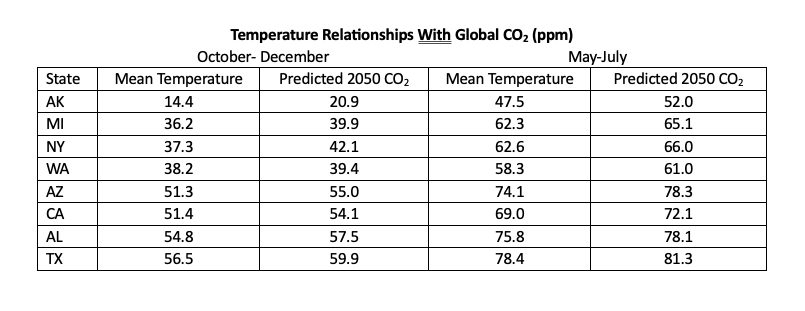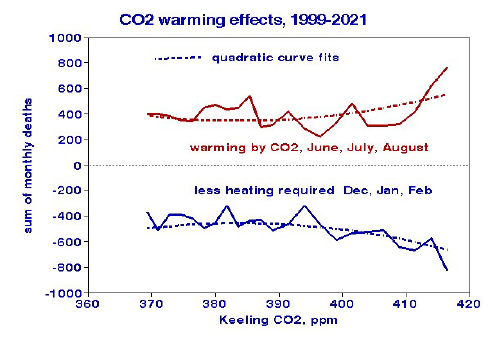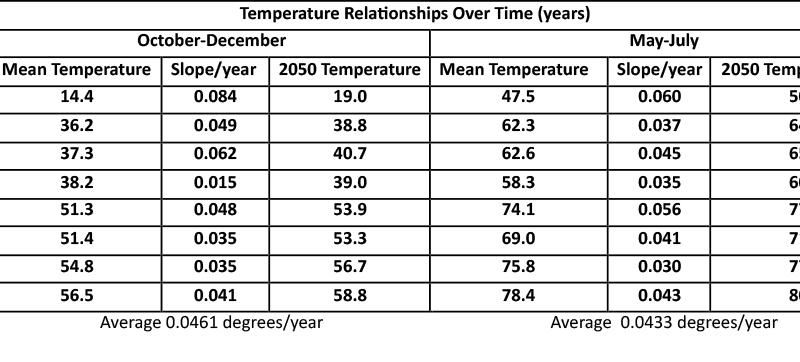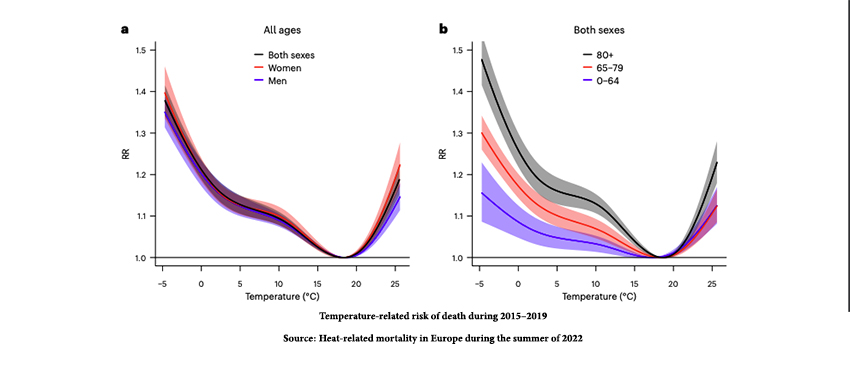Not surprisingly, others have pondered this question as well.
- “… higher temperatures predicted for 2050 might result in nearly 9000 fewer winter deaths each year…” - Heat-related mortality in Europe during the summer of 2022.
- “Global warming can be expected to reduce cold related deaths more than it increases the rarer heat related deaths.” - Heat related mortality in warm and cold regions of Europe: observational study
- Heat-related mortality comprised 3.0% and cold-related mortality comprised 4.2% in 107 US communities from 1987-2000.” - Weather-related mortality: how heat, cold, and heat waves affect mortality in the United States.
- “…reductions in cold-related mortality under warming climate may be much smaller than some have assumed.” - The potential effects of climate change on winter mortality in England and Wales.
Longitudinal Analysis
While much of the climate literature is based on complex mathematical models, I relied on measured data to let the past predict the future - temperature data, expressed in oF, by state and global CO2 data from the Mauna Loa observatory in Hawaii that defined the period of study, 1960 to 2022.
 As a convenience sample, I selected eight states representing hot and cold climates in the US and averaged their temperatures over May-July and October-December. I used 10-year running averages to smooth out random variability and linear regressions to estimate the relationships with time or CO2. The graphs show a highly positive 95% correlation between CO2 and running mean temperatures in both seasons, even though the differences are only a few degrees over the entire CO2 range.
As a convenience sample, I selected eight states representing hot and cold climates in the US and averaged their temperatures over May-July and October-December. I used 10-year running averages to smooth out random variability and linear regressions to estimate the relationships with time or CO2. The graphs show a highly positive 95% correlation between CO2 and running mean temperatures in both seasons, even though the differences are only a few degrees over the entire CO2 range.
The table displays the regression results for each state, which are similar despite their very different climates; the average CO2 effects are nearly identical for both seasons. I also estimated the mean temperatures for the year 2050, when global CO2 is expected to reach 500 ppm. These increases are modest, from about 3-6 oF or 2.8 oC. The average change in temperature/parts per million (ppm) CO2 was 0.0265 for October to December and 0.0244 for May to June.

I replicated this analysis with time (year) as the independent variable, with similar results. [1] The consistency of these results over 60 years and across the North American continent supports the concept of global effects. For comparison, the rate of global mean temperature with CO2 is 0.016 oF per ppm, similar to the eight states overall. CO2 increased linearly over time; other time-dependent factors, such as economic growth, could have also played a role.
Mortality-temperature Relationships,
Mortality rates for major causes of death have consistently trended downward (and life expectancies upward) until about 2016. Except for the COVID pandemic, the reasons for these changes are not apparent, although smoking rates continue to drop and ambient air quality has improved. Given the steady increases in greenhouse gases and global temperatures, climatic effects must be considered. Mortality rates tend to be seasonal, with excesses for hot and cold excursions, especially among the elderly. Accordingly, year-round temperature changes are not necessarily adverse.
The National Safety Council (NSC) provides monthly historical data from 1999 to 2021 on deaths from external causes like drowning, poisoning, etc., including “natural heat and cold,” defined as heat waves or extremely cold conditions. Deaths from natural heat and cold peaked in July (heat waves) and February (cold snaps) and increased from 1999 to 2021. I tested the hypothesis that the heat deaths may have been exacerbated by global warming due to CO2 and cold deaths being diminished. [2]
 I evaluated the global warming hypothesis by testing the temporal relationships between death counts and global CO2, which were nonlinear (graph) but statistically significant. The chart shows European trends; similar relationships are seen in the US. Heat-related deaths in the summer would have been partially elevated by CO2, which could be partially relieved the effects of cold snaps, hence the negative position on the graph. The net effects of heat and cold are essentially nil; thus, global increases in year-round temperature may not increase year-round mortality. 2023 may be an exception, but current data are scarce.
I evaluated the global warming hypothesis by testing the temporal relationships between death counts and global CO2, which were nonlinear (graph) but statistically significant. The chart shows European trends; similar relationships are seen in the US. Heat-related deaths in the summer would have been partially elevated by CO2, which could be partially relieved the effects of cold snaps, hence the negative position on the graph. The net effects of heat and cold are essentially nil; thus, global increases in year-round temperature may not increase year-round mortality. 2023 may be an exception, but current data are scarce.
There are several important points here:
- The cold “benefits” slightly outweigh the heat penalties with essentially no year-round effects.
- The apparent effects of CO2 are nonlinear, intensifying above about 395 ppm after about 2012.
- These deaths are quite small compared to the approximate monthly death toll from all causes. Similar small death counts were reported in a European study
- Heat deaths are mainly acute, affecting the frailest individuals.
- Cold deaths are mainly due to the incidence or exacerbation of cardiovascular or respiratory diseases, operate for extended periods, and may be more sensitive to age.
[1]

[2] The NSC database provides only the total of heat and cold deaths; I assumed that the June, July, and August deaths resulted from heat waves and the December, January, and February deaths were due to cold snaps.
Sources: AR6 Synthesis Report Climate Change 2023 IPPC
Heat-related mortality in Europe during the summer of 2022. Nature Medicine. DOI: 10.1038/s41591-023-02419-z




